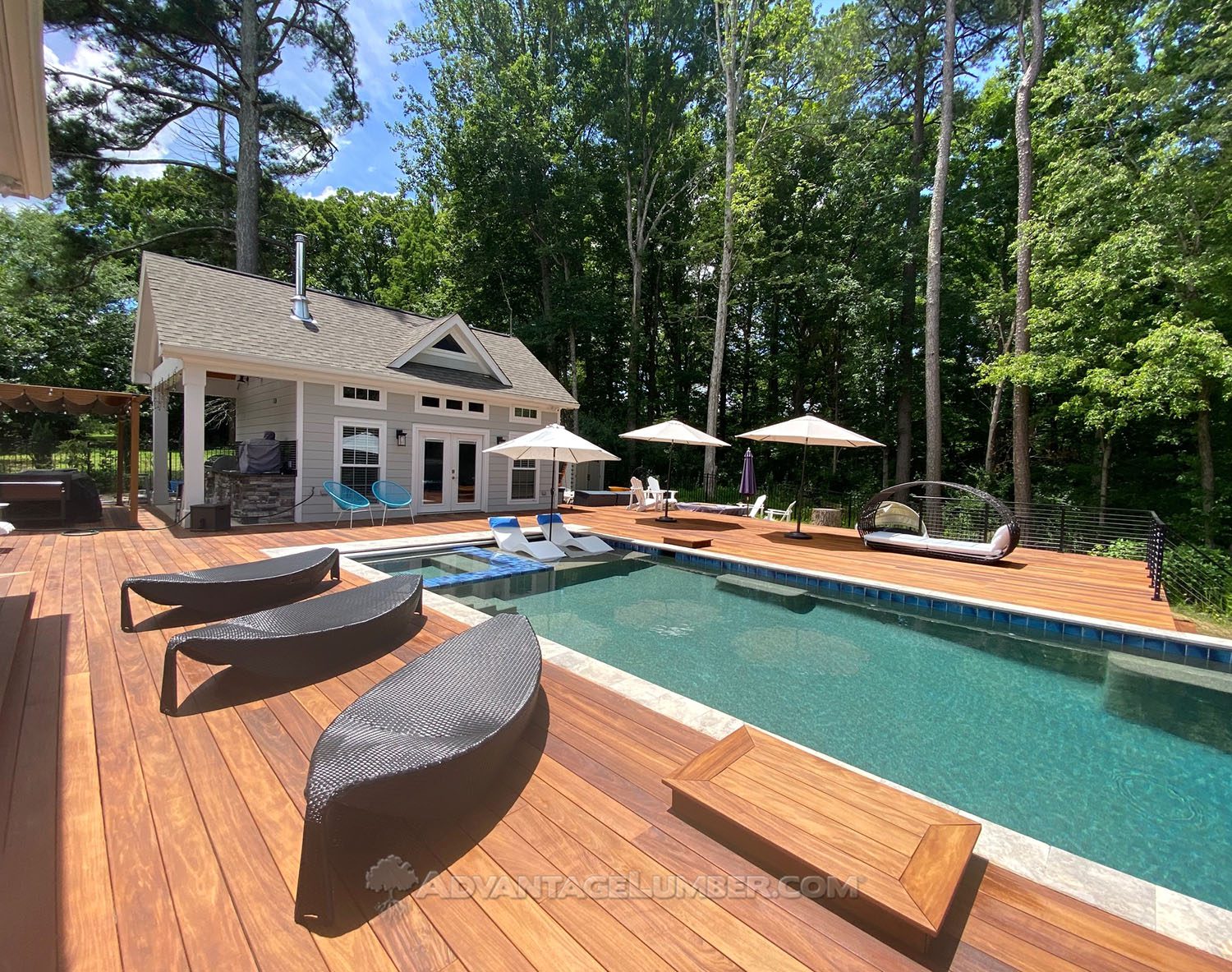When it comes to building decks, furniture, or outdoor structures, Ipe wood often stands out as a top choice. Known for its exceptional durability, rich dark tones, and resistance to weather and insects, Ipe is a premium hardwood that checks all the boxes.
However, its premium qualities come with a premium price tag, making it a costly option for many homeowners and builders. Fortunately, there are several alternative wood species that deliver similar durability, low maintenance, and long lifespans at a fraction of the cost.
In this blog post, we’ll look at four fantastic alternatives to Ipe—Teak, Mahogany, Tigerwood, and Garapa—and why they might be the perfect fit for your next project.
Teak: The Timeless Classic
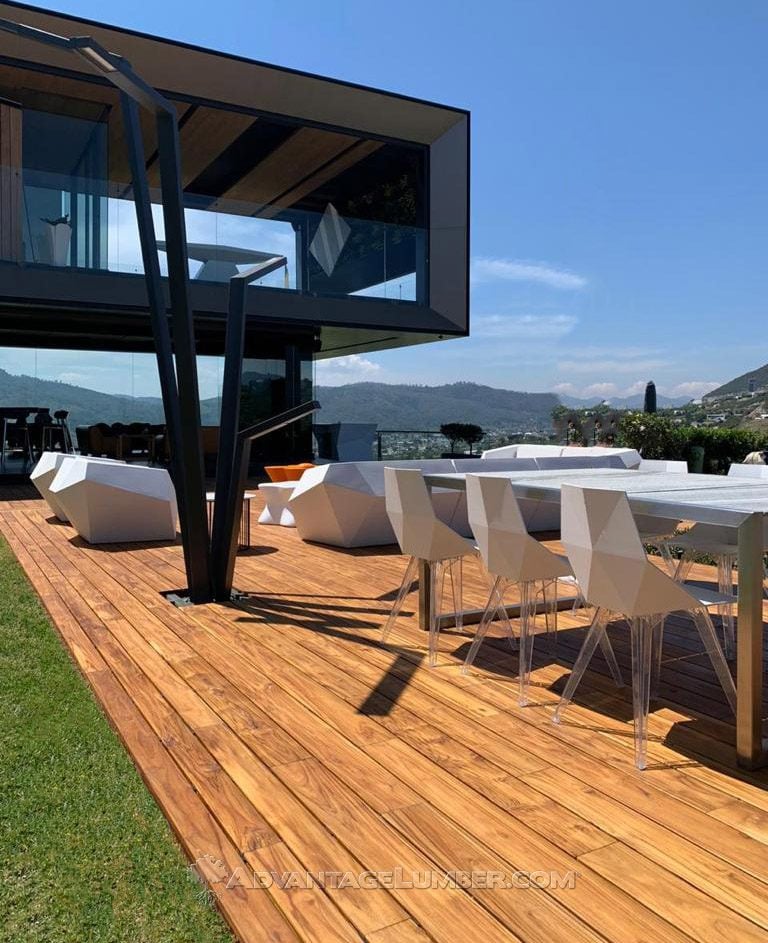
Teak is a globally renowned hardwood celebrated for its natural beauty and resilience. Native to Southeast Asia, this golden-brown wood is packed with natural oils that make it highly resistant to moisture, rot, and pests—qualities that are similar to Ipe.
Teak’s durability makes it a favorite for outdoor furniture, boat decks, and even flooring. While it’s still considered a premium wood, Teak is often significantly cheaper than Ipe, especially when sourced sustainably from plantations rather than old-growth forests.
One of Teak’s standout features is its low maintenance. Over time, it weathers to a stunning silver-gray patina if left untreated, or it can retain its warm honey tones with minimal oiling. With a lifespan that can easily exceed 25-30 years, Teak offers a cost-effective alternative without compromising on quality or longevity. At the time of writing this post the Teak decking from AdvantageLumber.com is currently 43% cheaper than Ipe wood.
Mahogany: Elegance Meets Endurance
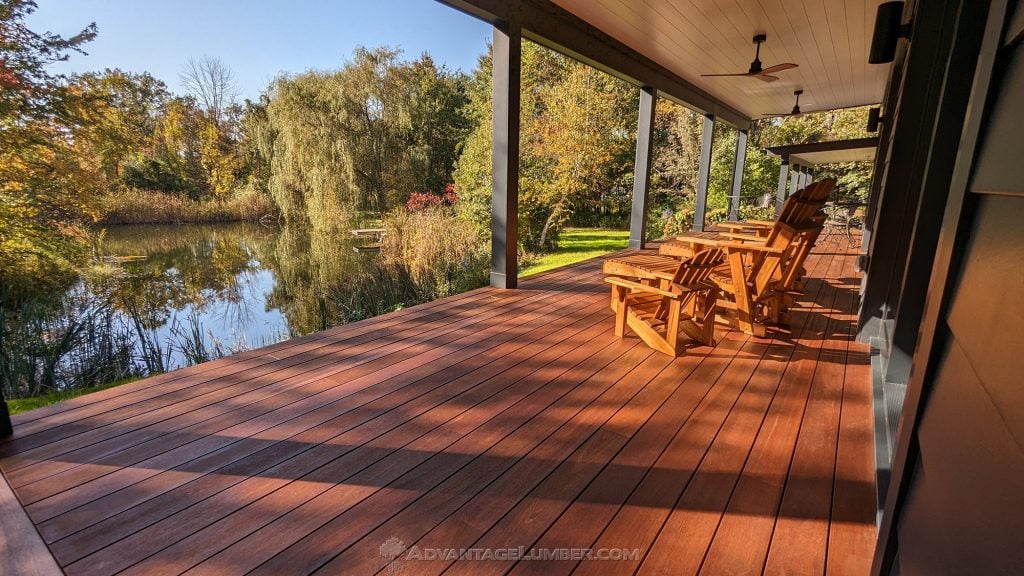
Mahogany (Red Balau) is another excellent substitute for Ipe, blending affordability with durability and a luxurious aesthetic. This tropical hardwood, often sourced from Asia, boasts a rich reddish-brown hue that deepens with age. Mahogany’s tight grain and natural resistance to decay make it a strong contender for outdoor applications like decking, siding, and furniture.
While Mahogany may not be quite as hard as Ipe (it ranks slightly lower on the Janka hardness scale), it still holds up remarkably well against the elements when properly sealed or treated. Its lower price point—sometimes up to 47% less than Ipe—makes it an attractive option for budget-conscious projects. With regular maintenance, Mahogany can last 20-25 years or more, offering a long-lasting, elegant solution that doesn’t break the bank.
Tigerwood: Bold Beauty on a Budget
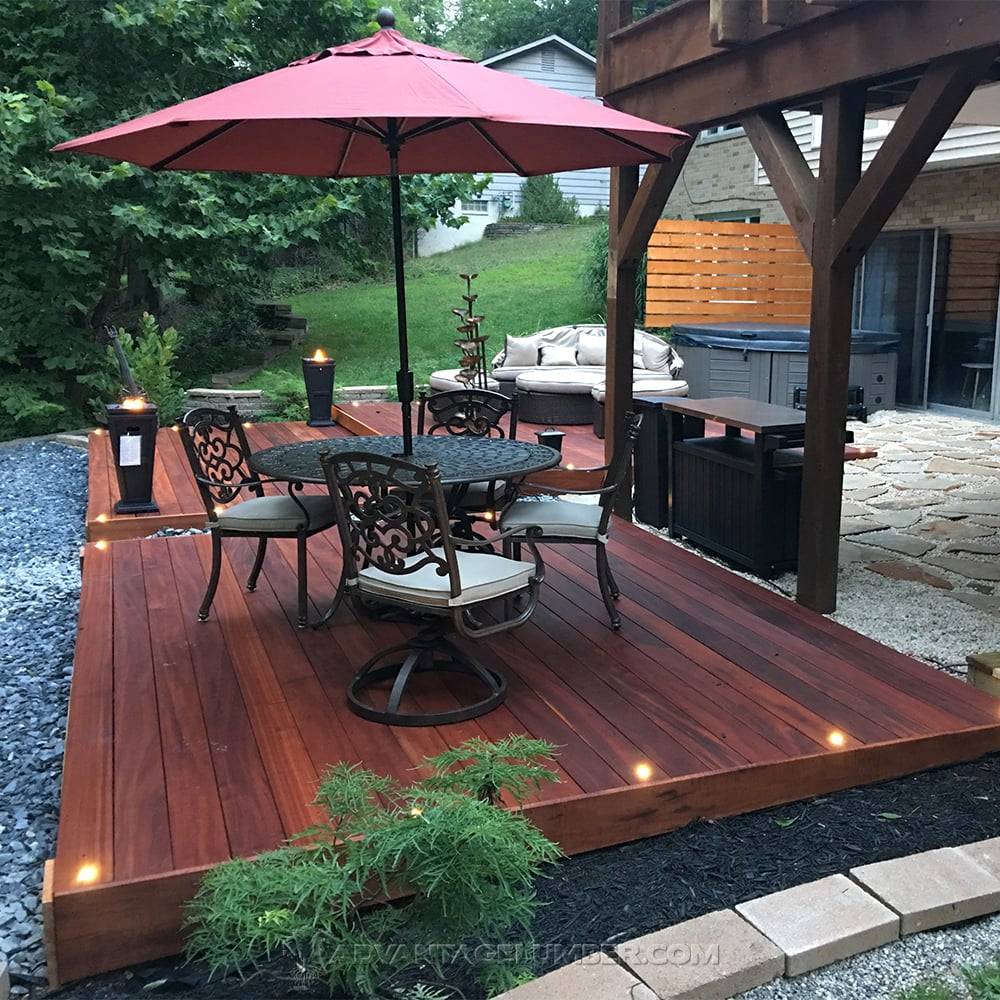
If you love Ipe’s striking appearance but not its cost, Tigerwood might be your dream wood. This exotic hardwood, native to Central and South America, is famous for its dramatic dark streaks and vibrant reddish-orange tones—hence the name “Tigerwood.”
Beyond its eye-catching looks, Tigerwood is incredibly durable, with a Janka hardness rating that competes closely with Ipe. It resists moisture, insects, and wear, making it ideal for decking, flooring, and outdoor structures.
Tigerwood’s affordability is one of its biggest draws. It typically costs significantly less than Ipe while delivering a similar lifespan of 30+ years with proper care. Its unique grain patterns and bold coloration provide a standout aesthetic, giving your project a distinctive flair without the premium price tag. A UV oil such as Ipe Oil can help preserve its vivid hues, though it also weathers gracefully over time if left natural.
At the time of writing this post Tigerwood Decking from AdvantageLumber.com is 52% cheaper than Ipe Wood.
Garapa: The Understated Workhorse
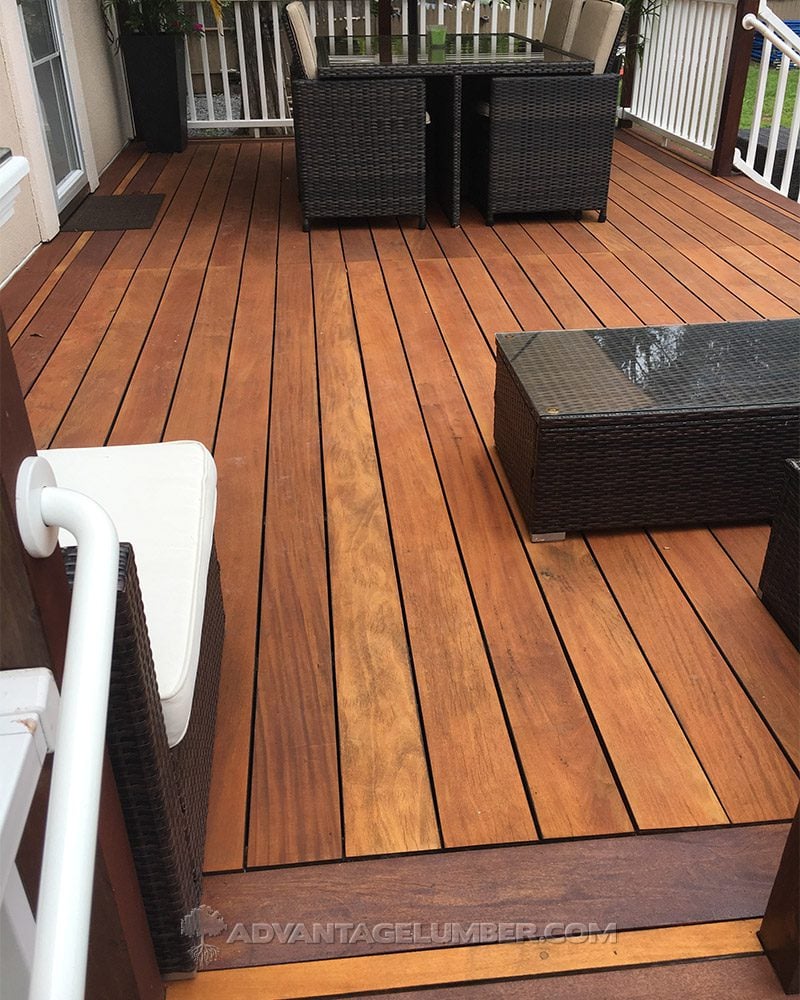
Garapa, sometimes called Brazilian Ash, is a lesser-known but highly practical alternative to Ipe. Sourced from South America, this golden-to-reddish-brown hardwood offers impressive durability and resistance to weathering, rot, and insect damage. While it may not have the same deep, dark tones as Ipe, Garapa’s lighter color palette brings a bright, inviting warmth to decks, fences, and outdoor furniture.
What sets Garapa apart is its price—currently it’s 63% lower than Ipe—combined with a lifespan that can reach 40 years or beyond with minimal upkeep. Its smooth texture and tight interlocking grain make it a joy to work with, and it holds finishes well if you choose to stain or seal it. For those seeking a reliable, low-maintenance hardwood that won’t strain the budget, Garapa is a hidden gem worth considering.
Why Choose These Alternatives?
While Ipe remains a gold standard for hardwood projects, Teak, Mahogany, Tigerwood, and Garapa offer compelling advantages that make them worthy substitutes. Here’s a quick rundown of what they share:
- Durability: All four species are naturally resistant to moisture, pests, and decay, ensuring they stand up to harsh outdoor conditions.
- Low Maintenance: Like Ipe, these woods require minimal upkeep—occasional cleaning and optional sealing are often enough to keep them looking great.
- Longevity: With lifespans ranging from 20 to 30+ years, they deliver lasting value.
- Cost Savings: Each of these options comes at a significantly lower price than Ipe, making them accessible for a wider range of budgets.
Final Thoughts
Choosing the right wood for your project doesn’t have to mean sacrificing quality for cost. Teak, Mahogany, Tigerwood, and Garapa provide the durability, beauty, and longevity of Ipe at a more affordable price point. Whether you’re drawn to Teak’s classic charm, Mahogany’s rich elegance, Tigerwood’s bold patterns, or Garapa’s understated reliability, there’s an option here to suit your needs and style. Next time you’re planning a deck, furniture piece, or outdoor build, consider these alternatives—you’ll get the performance you want without the premium cost.
Which of these woods catches your eye? Let us know in the comments, and happy building!
